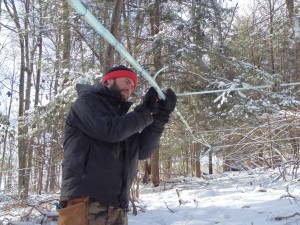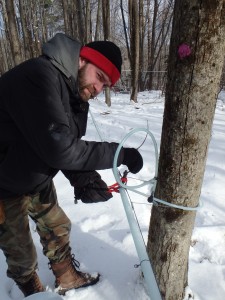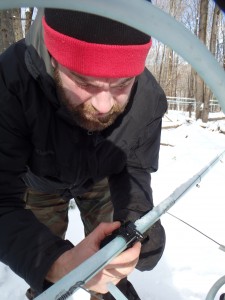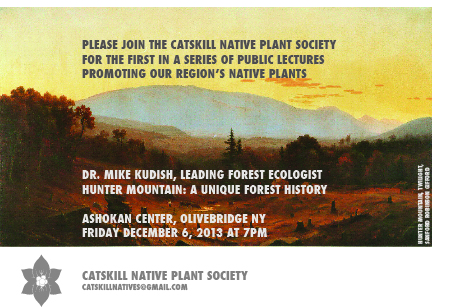Generally if a book recurs in conversation time and again for years, I get around to reading it. As a single person who has never had any particular desire to be single, dating is a common theme of discussion, and one of the standard variants of that discussion occurs when I speak with my some of my more rakish friends who try their best to cure me of my involuntary celibacy. The cure, they insist, is something which I in my better moments would label “misogyny.” “Kuhner, don’t put them on a pedestal. They’re all whores and the only men they feel comfortable with are the men who treat them that way because inside they know it’s true. Even if they don’t know it’s true they know it’s true.” I’d say, “Fine, whatever,” and then we’d get down to discussing our actual lives. They would tell tales of the parade of women passing through their bedroom, who all seemed lovely to me and who they disposed of as quickly as they came, and I would have more or less nothing to report, a few unrequited crushes perhaps, or some woman briefly using me as filler material in between more serious relationships. The advice I’d give them when I heard about the great woman/women they were seeing would be to say, “She sounds great, marry this girl!” “You’re a hopeless idiot,” would be the response, “listen Kuhner, I’ve told you a thousand times, read The Game.”
So finally when at a wedding-reception recently a nice man who had a nice girlfriend insisted I read this book, I decided to pony up the 49 cents on Amazon (plus $3.99 shipping of course) and read this thing. “It’s just like having good manners,” he said. “If you’re having a nice conversation with someone and then cough in their face, they’re going to be turned off. What you don’t realize is that men and women are very different, and if you don’t have these techniques, you’re basically coughing in women’s faces all the time.”
So I read the book. Thankfully, it’s not actually a book of pick-up techniques: it’s a memoir, written by Neil Strauss, a writer for Rolling Stone (with some flair as a writer) who studied under a series of pickup artists who were teaching their techniques for fees. He became a pickup artist himself and ended up living in a Hollywood mansion with several others, where their pickup seminars paid for their $14,000 per month rent. Completely bizarre things happen. One of the housemates picks up Paris Hilton at the burrito bar down the block. After the author picks up Courtney Love during an interview, she ends up moving into the mansion. Britney Spears also falls for the technique, though all she surrendered was her phone number. Heidi Fleiss, it ends up, uses almost the same pickup techniques herself, and just as Strauss was convinced he could get almost any woman to sleep with him, Fleiss believed she could find any woman in a bar and get her to work as an escort – whore – within a month.
The pickup artists are quite an odd cast of characters. The book makes it clear that they are all quite successful in their own ways – and from what I’ve seen of the dating world, I don’t doubt this – despite the fact that they could be unprepossessing and in fact downright ugly. David X (they all used handles), a “biker turned construction worker,” is the extreme example, though none of them were rich, handsome, or successful in almost any way except for the fact that they could seduce women:
Every PUA [pick-up artist] had a specialty, and David X’s was harem management – juggling relationships with multiple women without lying to them. When we walked into the dim sun restaurant, I was shocked by what I saw waiting for me. David X was quite possibly the ugliest PUA I’d ever met. He made Ross Jeffries look like a Calvin Klein underwear model. He was immense, balding, and toadlike, with warts covering his face and the voice of a hundred thousand cigarette packs. My meal with him was like so many I’d had before. Except the rules were always different. His were: “1. Who cares what she thinks? 2. You are the most important person in this relationship.” (145)
Another pickup artist also had two rules, which were similar enough:
The first: No good deed goes unpunished. (A phrase, ironically, that was coined by a woman, Clare Boothe Luce [I will note that this is not ironic].) The second: Always have a better answer. (132)
I have the most complete contempt for material of this sort, and I will confess to a degree of impatience while wading through it. For me it is like reading a book which lovingly documents the techniques of real-estate salesmen. Yes, I need a place to live, and yes, I understand that there are great fortunes to be made in real estate for people with motivation to make great fortunes, but I don’t really care about the details: I want to know enough about the market to get me a home. A book about man’s mystical love of land is more useful to me: that topic I can spend a lifetime with. But the real-estate market I merely hope to pass through and it will never be any great interest of mine. And in fact when I see how rich people do not care for good land, and real-estate agents don’t care whether they do or not so long as they pay the highest price – this to me makes me look down even on the necessary prelude to that mystical, lifelong relationship man can have with home.
Of course I can summon up some curiosity concerning the make of the human organism, and of mammals in general. I know that I don’t find myself attracted by people who punish my good deeds, or always have a better answer. I don’t think all women do either, but surely a large number are indeed attracted by abuse and degradation. I have a friend who worked for a year in the district attorney’s office prosecuting domestic violence cases, and he was sickened by the whole thing almost the entire time: he hated the abusive men, and he hated the fact that the women really seemed to love them. There was something deeply disturbing about it. Similarly, living up in the country I have spent much more time around dogs than I ever had in the past, and I have been amazed how in their fights with each other they seem to consider being mounted by their opponents the greatest humiliation. Intriguingly, even the females will mount and pump the other dogs they are intending to dominate. The act of mounting seems to have two functions among dogs – reproduction and humiliation. I don’t doubt that both these meanings are in the back (or front) of human brains as well, which is why sex is particularly difficult for proud women and downtrodden men.
And in fact the two objectives of most pickup technique, as discussed in the book, appear to be 1) enhancing the confidence of the man and 2) destroying the pride of the woman (called “negging”). Any actions that could make her feel special or important – such as compliments, paying for things, etc. – are to be avoided. This is still wildly counterintuitive to me, but hey, these people pick up hundreds of women per year in bars and I’ve picked up maybe one my entire life (and even that one is a debatable instance).
Anyway, this kind of technique is repugnant, so I don’t really care how effective it is. It might be useful to know for training a dog, but I will continue to look for more in a wife than I do in a dog. (In fact, one of the pickup artists used as his woman-handling Bible Lew Burke’s book Dog Training, which has been called the dog training book “from Hitler’s private files.”) As my rakish friends say, “Kuhner, you’re a hopeless idiot.”
But in fact that is more or less what Neil Strauss concludes as well (that one must look for more in relationships, not that I am an idiot). I was thankful that the book was a memoir because it put all these techniques in a human context: all of the pickup artists were deeply unhappy, deeply damaged people, neither admirable nor even psychologically stable. Their Hollywood mansion – called Project Hollywood – was little more than a mess of male dysfunction. The original dream had been something like the Playboy Mansion; it had turned out otherwise:
The point was women; the result was men. Instead of models in bikinis lounging by the Project Hollywood pool all day, we had pimply teenagers, bespectacled businessmen, tubby students, lonely millionaires, struggling actors, frustrated taxi drivers, and computer programmers – lots of computer programmers. (287)
With the influx of new, younger residents, Project Hollywood looked more like a frat house every day, though most frat houses were cleaner. Without Mystery [the founding PUA who had been kicked out due to internal squabbles over a girl] sitting in the living room, ready and willing to share the details of his latest drama with whoever passed by, the lack of communication in the house became even more uncomfortable. Whenever I walked through the living room, I’d find new roommates lying on their bellies on the carpet, playing video games. They never looked up or said a word, even when I greeted them. They weren’t PUAs; they were vegetables. If someone had told me two years ago that this was the lifestyle I had to look forward to, I would never have joined the community. I would have realized that those who live by the joystick are doomed to die by the joystick. At Papa’s [another PUA] twenty-fourth birthday, not a single woman showed up – let alone Paris Hilton, who, needless to say, had never come to party at Project Hollywood as Papa had hoped. His only friends were PUAs. And, for some reason, they all ignored me. I couldn’t understand it. In the week that followed, Tyler Durden [to this day a PUA of some notoriety, and the villain in Strauss’s account], who’d never been directly hostile to me, started writing posts attacking me online. I decided it was time to have a talk with him about everyone’s strange behavior in the house. I navigated through the overflowing trash bags in the kitchen; walked through the backyard, where just a small puddle of sludge lay at the bottom of the hot tub; and knocked on Papa’s back door. I found Tyler Durden sitting at a computer, posting on the seduction boards. (424)
The older PUAs started unraveling as they found that for all their artistry they were still utterly miserable and unloved; the younger ones seemed to be weird robots who could follow the pickup routines but had no access to their inner lives. As Strauss says of his two years living in the mansion, “I’d never heard grown men cry as much as I had in the last two years.” One of Strauss’s more promising students, who just wanted to use the techniques to get married and have a good life, called him just after attempting suicide ten days before his first child was due:
“When I first got in the community, I wrote down everything I wanted,” he said. “And now I’m living the life I imagined. I have the money, the big house, and the beautiful girl. But I wasn’t specific enough about the beautiful girl. I never wrote that she had to treat me with respect and kindness.” (370)
His problems actually began when he gave up the techniques because they didn’t satisfy his desires to be nice to his wife:
The problem is that I changed. It was too hard to be that person who Mystery and David DeAngelo taught us to be [constantly negging or demeaning women]. That person wasn’t a good guy. And that’s not the kind of person I wanted to be. I like doing nice things for people. So I got her whatever she wanted. I sent her flowers three times a week. I tried it her way, but it didn’t work. (369)
This is a bit of a conundrum – the very things that can get relationships started are incompatible with making them last. It makes you wonder if anything good can come of something that starts this way. I have always sensed this whenever I hear people using any kind of technique at all in life – whenever they consciously treat it as a “game.” Anything less than complete engagement has always aroused a suspicion that it cannot get me where I want to go. What Jung says about psychotherapy is true for everything:
In any thoroughgoing analysis the whole personality of both patient and doctor is called into play. There are many cases which the doctor cannot cure without committing himself. When important matters are at stake, it makes all the difference whether the doctor sees himself as a part of the drama, or cloaks himself in his authority. In the great crises of life, in the supreme moments when to be or not to be is the question, little tricks of suggestion do not help. (133)
Strauss’s book comes to much the same conclusion: getting good at “the game” ended up being useless when it came time for the mask to come off, as at some point it must. All the people with inner integrity started leaving the community: one went off to India to repent on an ashram; another became a devout orthodox Jew; after a brief stint in a psychiatric hospital after falling for one girl and then alienating her, Mystery went off to Vegas to start over. The author gives himself a predictable but satisfying end, falling for the one girl who doesn’t fall for his techniques. After abandoning the routines as he sees them failing with her, she warms up to him and they start dating in perfectly normal fashion. I found myself by the end of the book intensely curious about their relationship – did it work? Did they get married? Did they live happily ever after? To me these questions were real and interesting. The techniques were not.
I may as well discuss at least some of the techniques, as the book did in fact explain certain things I’ve seen going on in bars. Some things are obvious: players always have to look the part, so they always dress to get attention and have at least one or preferably several conversation-starters on their person in the form of strange clothes, jewelry, hats, or what-have-you. Ridiculousness of clothing is no objection: it merely shows greater confidence. They have routines: magic tricks, card tricks, drawing on girls with markers, personality tests of the sort that become idiotically popular on Facebook (“Do you want to find out which animal you’re most similar to?” blah blah blah), handwriting analysis, smile analysis. I know someone who has memorized a routine which will produce a plausible Myers-Briggs reading for a person. In other words, have a party trick. And have a routine to get over each hurdle that can be predicted. For instance, in our culture kissing is a necessary prelude. Consequently you have a standard routine for getting over the barrier. In fact our culture has this in the form of dating. The dating has a ritual format, and according to the ritual, if a woman, when she is getting dropped off, stands in front of her door long enough it means she wants to be kissed. So you can get over your own nervousness and go ahead and do it. These pick-up artists, however, are out to move much more quickly, and anyway dating is something of a dying ritual. Each had a different routine, but all of them in essence created situations where kissing had become the topic and then body language could be read to gauge interest (“On a scale of 1 to 10, how good a kisser are you?” One would actually simply say, “Do you want me to kiss you?” and do so if she says yes, and have more routine negging her if she says no). Some of the recorded routines do, in fact, read as very smooth. Presuming, as in our culture we often may, that a woman wants to have sex that very night, then you are not competing against every other man she’s ever met in her life – you’re just competing against the other men who dare approach her that night. Seen in that context, having any kind of routine at all is likely to make you seem very smooth.
Reading the book reminded me – or rather, the book was itself an incarnation – of the sad feeling I got as I got, with age, a bit more desperate in the dating game: that people did one-night stands not because they were wicked and superficial, but because realistically speaking that was all that was available. People were so emotionally broken, and so bored and physically unfulfilled, that this was about as much intimacy as they could expect to get out of the near future. And it would hurt too much to keep waiting for something better.
But it also reminded me of the power and importance of idealism, as hard as it can be to maintain in the face of actual experience. Having an ideal always before you can, in fact, cut you off from experience, but it can also save you from really going into the abyss. The actual lives of the pick-up artists seemed horrible, and the hordes of disposable women involved never get any voice in the book but I doubt it’s pleasant for them either. As one of my rakish friends said, explaining why he won’t go near girls over twenty-five, “They get hardened, Kuhner. Hardened and wicked.” As I was reading this book, I was also perusing a collection of letters given me by a friend; he chose it for me in part because it contained the somewhat famous letter of Sullivan Ballou, written to his wife before the Battle of Bull Run (where he died). It is as moving a picture of the feelings of true love as has ever been written, and when I read things like that – examples of the power and depth of passionate devotion to a single person – I always feel kinship. “This,” I say, “this is what I’m after. And I don’t want to take any road that doesn’t lead here eventually – and sooner, Lord, rather than later.” And these sorts of things give the lie to the claim that we human beings can’t do monogamy – it’s a fragile ideal, but that doesn’t mean it isn’t possible. In fact it’s been done countless times, and lurks always in our hearts as a potential life. You have to consciously work for it, but that’s what an ideal does: it gives an outlet for that aspect of human life called work.
In fact discounting monogamy as a possibility is also a kind of fragile cultural creation, and the book makes that clear. The PUAs all read evolutionary biologists, and mined them for what they felt confirmed the outlines of their own lifestyle: Richard Dawkins and Steve Ridley and Stephen Jay Gould and others.
As a magician used to exploiting the gullibility of others, Mystery had no patience with anything spiritual or supernatural. His religion was Darwin. Love, to him, was simply an evolutionary impulse that enabled human beings to fulfill their two primary objectives: to survive and replicate. (163)
I accept nature as a good guide, but as is so often the case when the god “Darwin” is invoked, what is meant here is a specifically selfish, consumerist, pleasure-and-not-responsibility version of nature. If these PUAs were, as they say, just following their natures, I would respect their vision: each with ten wives and forty children, they’d be out enlarging their holdings and adding to their possessions, protecting and providing for their harems and progeny, and always on the lookout for new sexual opportunities. I can understand this. Their desire to be an alpha male would be backed up by actually living it: being protective, being cunning, being strong, having things and sharing them. But these guys talk Darwin and then reliably reach for the condom when Darwin-time actually arrives. It’s hard not to see this as the charade it is. I have written about this topic before when dealing with both Freud and Erich Fromm. Fromm wrote about how Freud’s boiled-down consumerist vision of human instincts did not lead to psychological health:
According to Freud, the full and uninhibited satisfaction of all instinctual desires would create mental health and happiness. But the obvious clinical facts demonstrate that men – and women – who devote their lives to unrestricted sexual satisfaction do not attain happiness, and very often suffer from severe neurotic conflicts or symptoms. The complete satisfaction of all instinctual needs is not only not a basis for happiness, it does not even guarantee sanity. Yet Freud’s idea could only have become so popular in the period after the First World War because of the changes which had occurred in the spirit of capitalism, from the emphasis on saving to that of spending, from self-frustration as a means for economic success to consumption as the basis for an ever-widening market, and as the main satisfaction for the anxious, automatized individual. Not to postpone the satisfaction of any desire became the main tendency in the sphere of sex as well as in that of all material consumption. (The Art of Loving, 85-6)
What Fromm may be objecting to here is not that our instincts cannot lead us to happiness, but that Freud accepted only very few of them as instincts and ignored the rest, creating that modern half-man, the consumer. In fact, we are amply equipped with all kinds of instincts which encourage devotion, tenderness, responsibility, protectiveness, and loyalty. They have counterbalancing instincts, towards polyamory, self-interest, and so forth – of course – but to claim that we are merely weak automatons wired for promiscuity is the utterest nonsense. If these reproductive impulses were so strong, there’d be no way these men would ever remember to reach for that condom. All I see is neurotic, limited, culturally cultivated self-protection, and truncate souls, and if the crutch of contraception were taken away, many of these people would hardly have the guts to keep doing what they are doing. The women would be more circumspect about who they slept with, and the men more susceptible to the softening effect that the helplessness of children (and the kinship of blood) has on us. This is not to say that they would be angels of monogamy – monogamy has been very much a cultural product as much as a natural one – but the picture would be fuller and more natural. It would not be childless loser-men in their forties sleeping with many dozens of emotionally stunted new women annually. This is a carefully managed artificial production, not nature. Now there are many who think it is an improvement on nature, and they have their right to their opinion, but I am not one of them. If I had to choose between the whole human richness of all the belt-notching that the entire city of Los Angeles has produced in the last half-century and that one letter of Sullivan Ballou, I have no doubt I’m taking Ballou. And that’s accepting the fact that in reality his marriage was surely hardly perfect. Regardless of the imperfection, the depth of devotion was still there, and to me that’s the valuable thing. Now I’m not one of these people who believes that this choice is necessary: I think the modern world in fact provides many tools to make the ideals of the past more livable. But we do have to hold on to those ideals to make this possible. In my own life, the way this plays out is simple: I’d rather have passionate devotion to one woman than have a city-sized harem of temporary encounters.
And Neil Strauss ultimately concludes much the same thing, and decides to bring his tale around to love and relationship, which is what ultimately creates everything that will be the future. The writing here is cheesy, but after more than four hundred pages of sick, unstable, needy, and immature people, it reads as real enough:
We were all searching outside ourselves for our missing pieces, and we were all looking in the wrong direction. Instead of finding ourselves, we’d lost our sense of self. Mystery didn’t have the answers. A blonde 10 in a two-set at the Standard didn’t have the answers. The answers were to be found within. To win the game was to leave it. (436)
This brings me back to idealism. I know that people are not what I would call well-educated nowadays, but reading this book sent me straight back to Shakespeare, because one of his sonnets could have been the epigraph for the whole book. I think it is so valuable to have these things stored up in one’s memory for precisely such occasions. The poem is not easy reading, but its two sentences take much less time to read than Strauss’s 437 pages, and have just as much content and very much the same point:
The expense of spirit in a waste of shame
Is lust in action, and till action, lust
Is perjured, murderous, bloody, full of blame,
Savage, extreme, rude, cruel, not to trust,
Enjoyed no sooner but despised straight,
Past reason hunted, and no sooner had,
Past reason hated as a swallowed bait
On purpose laid to make the taker mad;
Mad in pursuit and in possession so,
Had, having, and in quest to have, extreme,
A bliss in proof, and proved, a very woe,
Before, a joy proposed, behind, a dream.
All this the world well knows, yet none knows well,
To shun the heaven that leads men to this hell.
All in all, I can’t say I enjoyed reading the book all that much, nor can I say that I am likely to reread it, but it’s so easy to read that I can recommend the book, especially for women, who I think may as well know what might be headed their way at the nearest bar. The book is cleanly written and Strauss is clearly a smart, well-read guy (one of the turning-points is when he reads Parsifal). Hopefully the dating scene will be nothing more than a kind of ferry-terminal we have to pass through on our way someplace else, and while reading one book about it might be one too many, this one is not likely to do any damage or be overly taxing. I’m especially curious to know if a woman who is forewarned about this kind of pickup routine and these kinds of relationship dynamics is thereby protected or not – an especially interesting question in an age that is trying hard to create relationships between equals rather than female subordination.
[For an interesting take on “The Game” being changed by a culture of security and equality, take a look at Katie J.M. Baker’s review of the book Don’t Bang Denmark in Dissent Magazine.]





